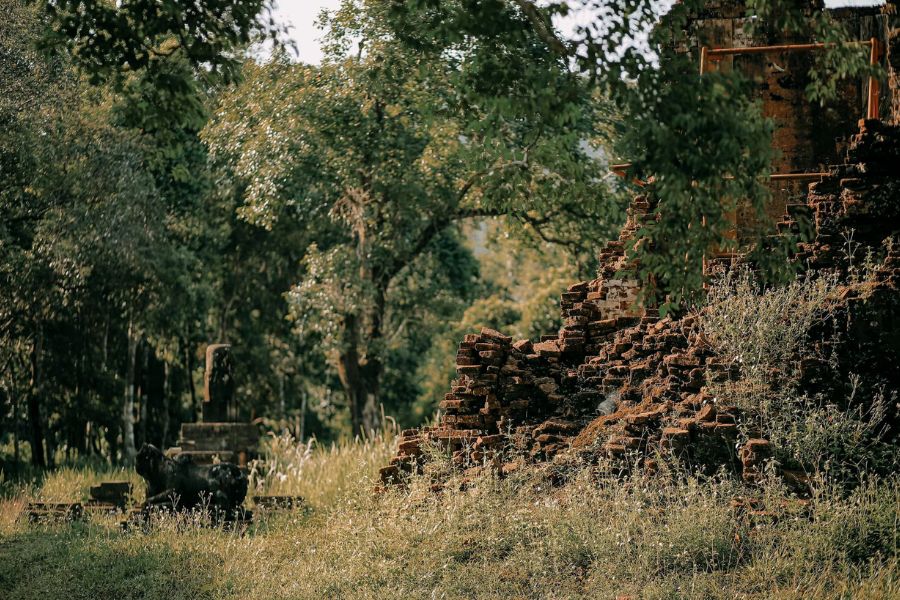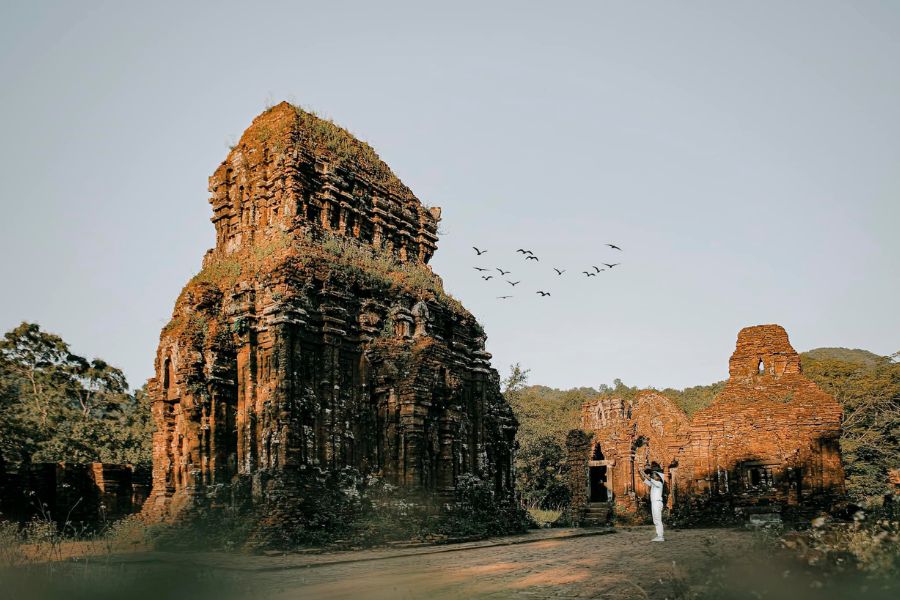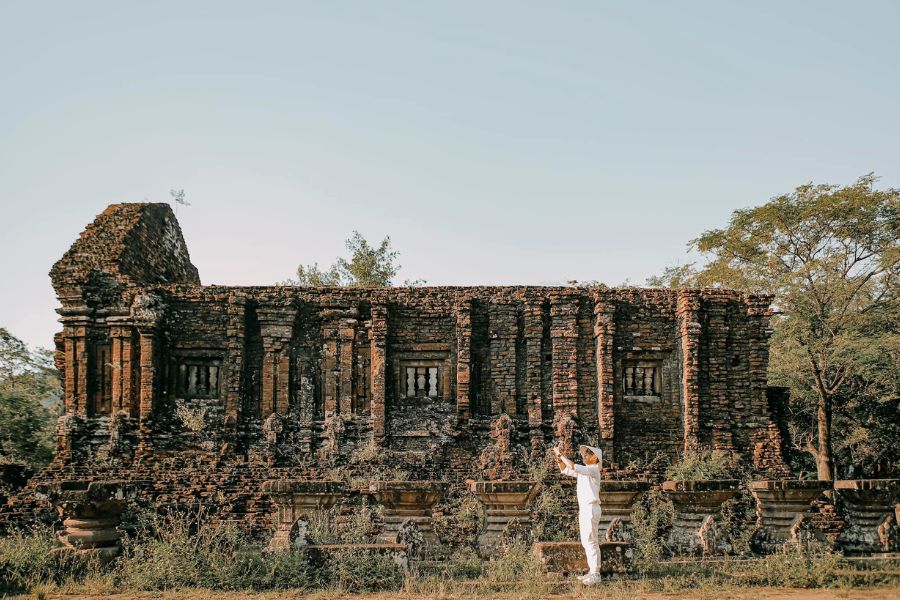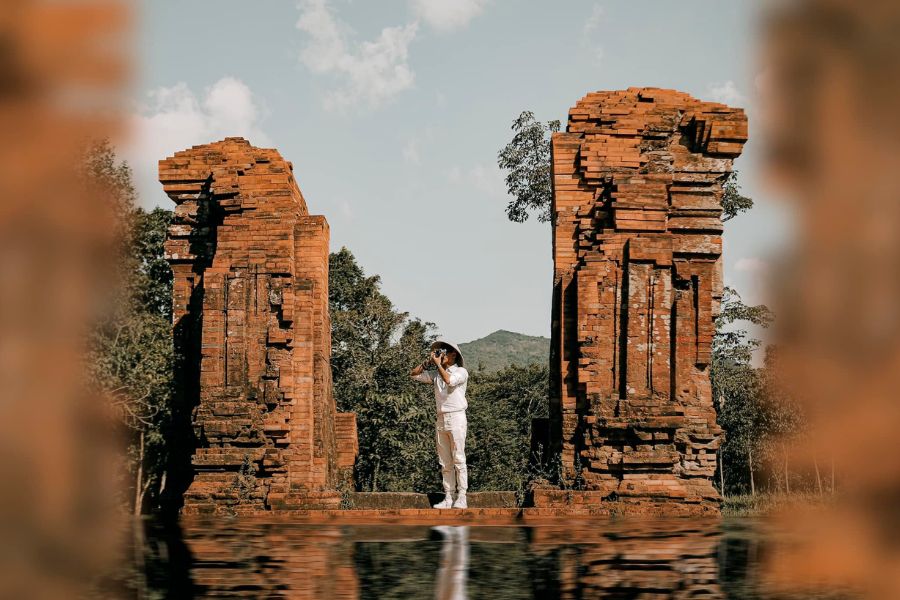Along with the ancient town of Hoi An, the My Son Sanctuary is one of two World Heritage Sites recognized by UNESCO in Quang Nam Province. Its collection of old temples with a unique architectural style, which contains significant cultural and historical values of the ancient Kingdom of Champa, has made the My Son Sanctuary famous and a popular tourist destination.
Located approximately 70 km southwest of Da Nang city and 45 km west of Hoi An, the My Son Sanctuary encompasses many ancient temples of the Kingdom of Champa, scattered across a 2 km diameter valley. The site served as the location for religious sacrifices and the tombs of the Champa dynasty’s kings and princes.

Visiting the My Son Sanctuary is best from February to April, when the weather is cooler and rain is less frequent. You can reach the site from Hoi An by riding a motorbike or hiring a taxi. In addition to exploring the unique temples and structures within the My Son Sanctuary, you can also witness traditional Siva dances performed by Cham artisans.
The History Of My Son Sanctuary In Hoi An
My Son is a complex of Hindu temples, originally the religious and political capital of the Champa Kingdom. It is the most significant Cham site in Vietnam and one of the most important in Southeast Asia. The temples were constructed from the 4th to the 14th century AD under the reign of King Bhadravarman. They were built using fired bricks, sandstone bas-reliefs, and stone pillars. The primary purpose of creating the complex known as My Son was to worship the Hindu deity Shiva.
During My Son’s occupation, Cham kings used it as a venue for religious ceremonies. Additionally, it served as a burial ground for individuals considered Champa royalty and national heroes.
In 1885, French architect, archaeologist, and historian Henry Parmentier and his colleagues began their work at this site. During their excavations and research, they discovered 72 relics in a two-kilometer-wide valley. Unfortunately, during the Vietnam War, the United States began carpet bombing the area. Within a week, a significant portion of My Son was destroyed.

My Son Sanctuary was constructed by the Champa people, an ancient ethnic group in Vietnam, from the 4th to the 14th century. It served as a religious and cultural center for the Champa, featuring temples dedicated to Hindu deities such as Shiva, Krishna, and Vishnu. My Son was a place for the performance of religious rituals and activities.
In the past, My Son has undergone numerous changes and losses due to wars and the passage of time. Nevertheless, it remains an architectural masterpiece with classical towers and stone sculptures creating a beautiful portrayal of Champa culture.
How To Get To My Son Sanctuary
My Son is approximately 40 kilometers from Hoi An and about 70 kilometers from Da Nang. Travelers can easily take a taxi, motorbike, or join organized tours from Hoi An or Da Nang to reach My Son. This makes transportation convenient and not overly challenging. The temperatures can get quite hot in this part of Vietnam, so the best time of day to explore the My Son complex is certainly early morning or late afternoon.
When I went on the sunrise tour there were only a couple large groups there, so if you are going solo you will have moments where you have certain temples to yourself. Though, many tours leave at around 10.30am from Hoi An so expect crazy crowds around those times as this truly is a must see attraction.

Entry Fee For My Son Sanctuary
Ticket prices for My Son Sanctuary typically vary depending on the regulations set by the management and the time of visit. Travelers should check current ticket prices before their visit. Typically, ticket prices range from 150,000 to 200,000 VND ($6.2 – $8.2) for adults and lower for children.
Unique Aspects of My Son Sanctuary
- Distinctive Architecture: My Son is renowned for its unique stone architecture and intricately carved stone sculptures. It is an outstanding example of the creativity and craftsmanship of the Champa people.
- Stone Sculptures: At My Son, you have the opportunity to admire unique stone sculptures that depict the culture and religion of the Champa people. These sculptures typically symbolize Hindu deities and hold significant artistic value.
- Untouched Nature: My Son is situated in an untouched natural area surrounded by forests and rivers. The landscape is serene, offering visitors the chance to enjoy a tranquil environment.
Significance to Vietnamese Tourism
My Son Sanctuary plays a crucial role in preserving and transmitting the cultural heritage of the Champa people and Vietnam. It is an attractive destination for both international and domestic tourists, promoting tourism in the Central Vietnam region. Additionally, My Son pays tribute to and showcases the unique cultural values of the Champa ethnic group, enriching the diverse cultural tapestry of the nation.
